Restoring the Sun God In Kashmir
The political urgency of rebuilding Hinduism in the Valley
 Amit Majmudar
Amit Majmudar
 Amit Majmudar
Amit Majmudar
 |
10 May, 2024
|
10 May, 2024
/wp-content/uploads/2024/05/SunGod1.jpg)
The ruins of the 8th-century Martand Sun Temple in Kashmir (Photo: Ashish Sharma)
IF RELIGION ITSELF were to vanish tonight, it would reappear at dawn. The sun has inspired worship for centuries, across civilisations, the obvious objective correlative of the divine. The Rig Veda has its hymns to Surya, and the Sun is conceived as one of the eyes of the Cosmic Man in the Purusha Sukta as well as the Gita’s universal form. The Sumerians had Shamash, and Inti was the patron deity of the Incas. One of the earliest monotheisms on record—the religious reforms of the Egyptian Pharaoh, Akhenaten—fixated on the Sun. The later monotheisms, which reduced the sun to something created by the God of the Old Testament, still placed a sun—the ‘nimbus’—behind the head of the saint or saviour in every fresco. The pre-Islamic Arabian Goddess Shams gave her name to the Sun—and to the 91st sura of the Quran—before her eclipse. One of Allah’s 99 names is an-Nur, ‘the Light’.
People on every inhabited continent have engaged in Sun worship at some time or another. It may well be the throughline of all world religions, the sole mythological constant. Sun worship in some form or another has proven remarkably resilient. This may be due to the sun’s relationship to human physiology, setting the circadian rhythm and sustaining everything from bone mineralisation to cell growth through its role in Vitamin D activation. Modern psychiatry describes Seasonal Affective Disorder—sunlight, quite literally, makes human beings happier. The number of baptisms has been falling throughout the West, but millions make pilgrimages south to bathe in the sun.
Hindu India used to build grand temples to the Sun. Konark’s Sun Temple, even in its weather-beaten and abandoned state, possesses a sculptural intricacy that seems beyond the capacity of men or machines to replicate. The 8th-century Martand temple in Kashmir offered prayers for over half-a-millennium before Islamising rulers demolished it, leaving the peristyle and fractured shrine we see today—poignant to some, sinister to others. Kashmir’s Muslims call the ruin “Satan’s Cave”.
The Martand Temple in Kashmir offered prayers for over half-a-millennium before Islamising rulers demolished it, leaving the peristyle and fractured shrine we see today—poignant to some, sinister to others. Kashmir’s Muslims call the ruin ‘Satan’s Cave’. Because of the persistence of Hinduism as a living religion, this site, unlike Delphi, is both a ruin and a wound
It is only natural that Sun worship, suppressed, should rise again. This temple, decades after the expulsion of the last Kashmiri Pandits, has seen a mix of religious—and political—attention. In 2022, a series of religious ceremonies took place there, one of them attended by Jammu & Kashmir’s lieutenant governor. Technically, this revivalism was illegal: the Archaeological Survey of India (ASI) does not allow active worship at protected sites, except in the case of temples still active at the time they came under protection. (ASI does permit movie shoots, however.)
This year, the government announced the installation of a statue of the temple’s founder, the Hindu king Lalitaditya Muktapida. The phrasing was perhaps deliberately ambiguous, clustering three words with slashes: “protection/ conservation/ restoration”, as if the third were merely on a spectrum with the first two. But whether and how to restore a temple—as opposed to merely protecting or conserving its ruins—raises issues of history, theology, and politics. The Martand Sun Temple presents a uniquely Indian, uniquely Hindu conundrum.
What would restoration entail, anyway? No photographs or paintings of the original structure exist; those available online are speculative. Although the Martand temple’s ruin includes a recognisable Vishnu, modern Hindus no longer build temples to the Sun. Still, a ruined Surya temple is not the same as a ruined Apollo temple in Islamised Anatolia, nor the same as a ruined Kinich temple in Christianised Mexico. Though not typically worshipped in murti form by modern Hindus, the solar deity, Savitr or Surya, remains a mainstay in ritual recitation. The Gayatri Mantra’s other name is the Savitri Mantra, the closest thing to a leitmotif in dharma’s eternal polyphony. Martand himself is a synthesis of Surya and Shiva, who attracts tens of millions of devotees. Because of the persistence of Hinduism as a living religion, this site, unlike Delphi, is both a ruin and a wound. In Kashmir, we see a living religion striving to resurrect an ancestral worship tradition at the exact site where violent, imperialist iconoclasm interrupted it.
What does the religion itself teach about such an ambition? Two opposite ideas, since the Hindu tradition harbours two contradictory views of physical reality. The tradition insists on the sanctity of specific sites, trees, rivers, mountains, and sculpted stones. At the same time, the same tradition insists that all material things are ‘maya’, illusory and transient, and subject to decay and dissolution.
This contradiction is typical of Hinduism. Walt Whitman epitomised its outlook in the ‘Song of Myself’, which he wrote after reading the 10th and 11th chapters of the Bhagavad Gita in New York City’s Astor Library. “Do I contradict myself?/ Very well then I contradict myself,/ (I am large, I contain multitudes.)” Multitudes, in Hinduism’s case, of Gods and Goddesses, paths and panths, stories and ideas. Gloriously free of a single founder, this is the most many-minded of the world’s great religions. We see it in how centuries of caste endogamy coexisted with the radically egalitarian, Vedantic concept of the unity of all selves (atmans) in Brahman. Some Hindu holy men bathe every morning and fixate on ritual purity; some Hindu holy men smear themselves with ashes, never bathe (except accidentally in the rain), and wander forests and cities. The same people who insist on the importance of the ‘householder’ stage of life also stress the importance of detachment from worldly things. The Vedas are supremely sacred, but very few Hindus read them. Ayurveda and yoga optimise health of the body, likened, in the Gita, to mere clothing, to be doffed at death before donning a new set. Very well then, we contradict ourselves.
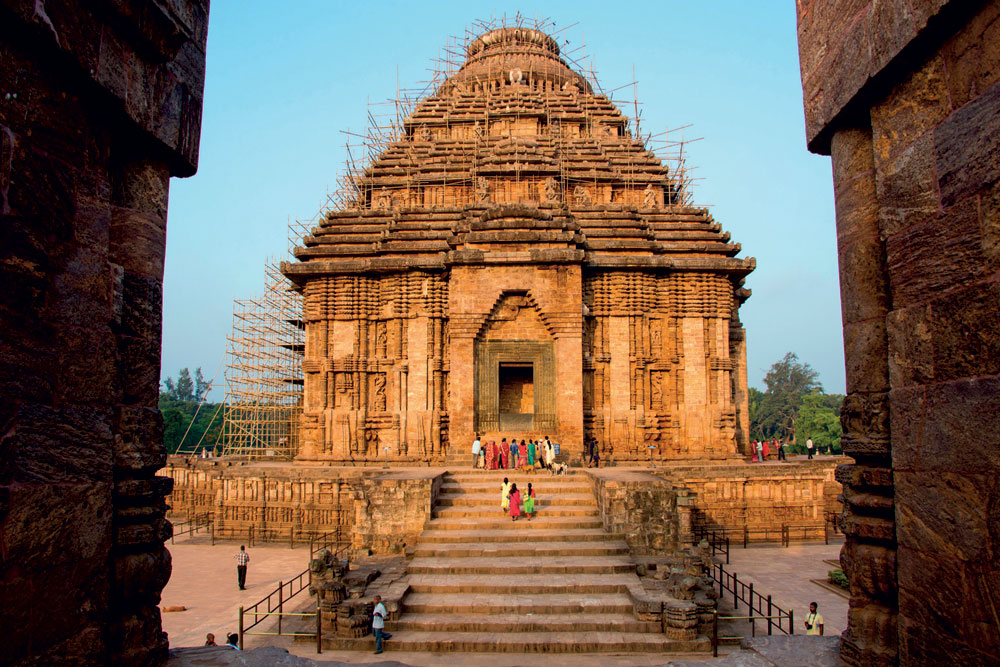
What this means, in the context of temple reclamation, is that philosophical arguments can be made in support of resuming worship precisely there, leaving the ruin be, or ceasing to preserve it at all.
In any case, debates on maya seem irrelevant to today’s resurgent Indian Hinduism: the debate on demolished temples has become, for some decades now, a political and inevitably communal one. In some cases, Muslims totally destroyed and built mosques atop the temple site; one such site has become Ayodhya’s Ram temple, a reclamation that still excites political passions. The question there was straightforward, since what remained of the original site was just enough to establish its true history. Muslim tyrants destroyed some temples only partially, however, to ensure the insult would not be forgotten; Aurangzeb built the Gyanvapi mosque on the intentionally preserved foundation of a pre-existing temple. The issue of temple reclamation includes contentious sites like these. Many coreligionists and descendants of those bygone invaders sympathise with the victimisers, not their victims.
No amount of restoration can restore a temple’s ancient function. No temple restoration can do so, because society has changed too drastically. Some temple roles have persisted into the modern era, while others have not. Temples do not double as banks and hospitals. Yet their role in attracting tourism ensures their centrality in local business and employment
A CASE LIKE Kashmir’s Martand temple ought to be an easy one. There is no current mosque on the site, so the destroyer’s coreligionists do not claim, as they do at Gyanvapi, the religious equivalent of squatter’s rights. On the other hand, an interesting, almost metaphysical question has arisen: What should modern Hindus do to, or with, temple ruins?
Simply to protect and preserve the site would be to immortalise the exact patterns of hammer blows and raindrops that make it look the way it does. Such a measure would fail to account for the continuance of the Hindu religion, placing the site exclusively in the domain of archaeology. It would preserve Hinduism in Kashmir by embalming its mutilation. The place that gave birth to Tantric treatises and Lalleshwari’s Shaivite poems would become a museum of Hinduism’s past, not a seedbed of Hinduism’s future.
Yet, restoring the site to active worship is a fraught proposition. Renovation must inevitably destroy, alter, or conceal some portion of what stands there. Should old stone give way to new? The artefact and the murti overlap two different, duelling kinds of sanctity. The historicising eye sees history even in its damage; the religious eye sees that history as imperial savagery, demanding redress. Does the sanctity inhere in the stones, or doesn’t it? Why not build an identical temple on the site of the old one? Archaeology has tools that can record sites in great detail. LIDAR (aerial laser mapping) produces intricately detailed maps, not just of specific structures but of the surrounding topography. Three-dimensional computer-rendering could be used as a reference for reconstruction.
Although building a new Sun temple may seem drastic, this is not without precedent elsewhere. The eclipse of Hashemite rule in early 20th-century Arabia witnessed the demolition, by Wahhabi purists, of centuries-old graves, pilgrimage sites, and mausoleums throughout Mecca. These included a shrine honouring the Prophet’s tooth, the grave of his father, and the house of his first wife. At the Saudi royal family’s behest, Hilton built a hotel over the house of Islam’s first caliph, and a German architectural firm designed a giant clock tower that resembles Big Ben. Pope Julius II decided to replace Old St Peter’s Basilica, which had stood on Vatican Hill since the days of Constantine. The structure was showing its thousand years, and he felt his tomb deserved a finer setting.
Whatever we may think of the motives or final structures, renovation always sacrifices something. India’s 21st-century Kashi corridor, like the Saudi transformation of Mecca, has been justified by the need to accommodate ever-increasing numbers of pilgrims. Broad and bright new structures, designed for massive influxes, have levelled countless tiny shrines of unknown age. True, there are over five times as many Hindus today as there were a century ago, but we cannot help but wonder what local heritage will be lost—permanently—in this rush to broaden and pave the pilgrim’s path.
In any case, the reasoning does not readily extend to sites where Hindus have not worshipped in centuries, like the Martand temple. For whose sake would the temple be restored? Most of Kashmir’s Hindus have been expelled, killed, or converted over the centuries, and some of Kashmir’s Muslims would sooner see “Satan’s Cave ” eradicated entirely than resounding with chants and dances. The site may draw tourists—but it can hardly serve as the locus for a genuine religious revival.
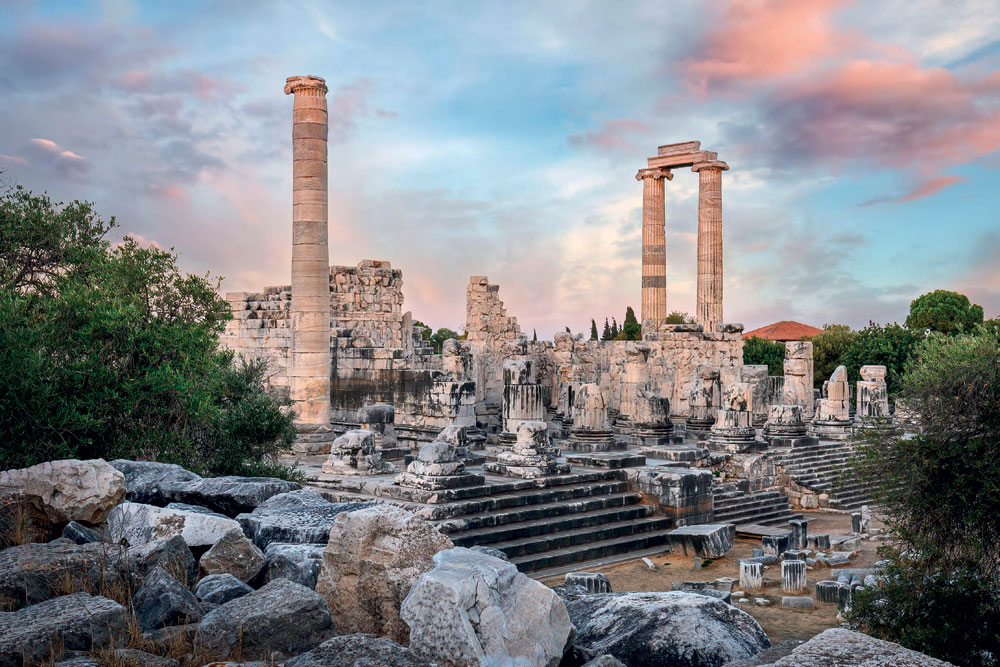
Recreating such a temple would require creating it anew, and the final product might not be entirely familiar to modern eyes. Some elements are constant: the traditional Hindu temple is built on a geometric template. As architectural shastras (treatises) from both North India and South India explain, this template derives from the intricate setup of the Vedic sacrifice. That is why it takes the form of a square and bears the name vastu mandala. The murti at the centre, in the Brahmasthan, occupies the traditional place of the fire. It dwells there, the equivalent of an eternal sacrificial flame. Yet there is something personal and living about that sculpture that indicates the transformation from Vedic ritual to Puranic bhakti, or devotion. A specific ceremony exists to open its eyes. The murti itself resides in a garbha griha, a Sanskrit compound word that combines the words for ‘house’ and ‘womb’. As R Champakalakshmi speculates in The Hindu Temple, the rectangular womb-house—often surprisingly small—may incorporate the non-Vedic design of megalithic cubical shrines made of four slabs of stone, as well as tribal shrines in the forest made of bamboo. If that theory is true, the temple, in its present form, embodies the millennia-spanning synthesis that is Hinduism itself.
A ruined Surya temple is not the same as a ruined Apollo temple in Islamised Anatolia, nor the same as a ruined Kinich temple in Christianised Mexico. Though not worshipped in murti form by Hindus, the solar deity, Savitr or Surya, remains a mainstay in ritual recitation. Martand himself is a synthesis of Surya and Shiva, who attracts tens of millions of devotees
Architecturally, however, most Hindu temples fall into two broad categories, the Nagara style common in North India, and the Dravida style common in the south. Several temples share characteristics of both. Kashmiri temple architecture evolved outside these categories. Its proximity to modern-day Afghanistan rendered it susceptible to the repeated invasions that have culminated in the religious demographic transformation of Abhinavagupta’s homeland. In antiquity, however, the region that influenced it was not ‘Afghanistan’ but Gandhara, with its Hellenistic-Buddhist fusion.
So, Kashmiri temples, in their intact state, looked quite different from the mental picture most modern Hindus have of their temples. What ruins remain reveal Doric pillars and airy courtyards. Temple restoration in Kashmir, if done with deep study and open-mindedness, has the opportunity to body forth the palimpsest of Kashmiri history.
The abrupt and violent stop to temple-building prevented elaborate shastras and Agamas from being composed, as such texts tended to codify prior innovations rather than drive new ones. Kashmiri lineages of masons and sculptors have gone extinct. Hindu stone workers were enslaved and relocated by the same invaders who destroyed their works of soaring faith. In Afghanistan and other parts of Central Asia, their skilled, uncredited hands were forced to build mausoleums for tyrants, their architectural marvels adorning an alien and hostile culture.
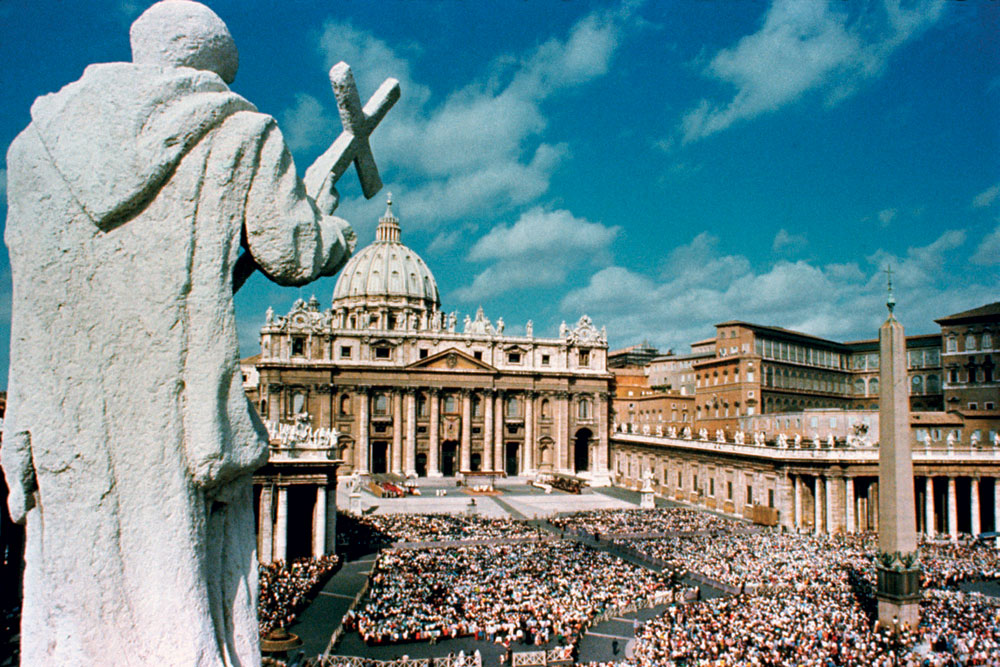
And yet, even this restoration can hardly restore the temple’s ancient function. No temple restoration can do so, not even Ayodhya’s, because society has changed too drastically. One thousand years ago, temples had not one but several functions. A dance mandap, also used for dramatic performances—a “performing arts center”, in the American phrase—was a default feature of the architecture. Areas for education and medical treatment were on site as well. Chock-a-block sculptures and broad paths for circumambulation made it a place for active, aesthetic appreciation. Royal families and merchant families deposited gold and other goods in its treasury so that it served as a bank as well. Surrounding lands were owned and administered by the temple; farmers tilled temple lands and proffered some portion of the produce back to the temple. The feasts, festivals, and daily prasadam, funded by the community’s wealthiest individuals and families, allowed the temple to serve as a funnel for wealth redistribution. Temple enclosures housed a marketplace at their periphery. The temple itself, for its construction and upkeep, employed countless people well beyond the Brahmins who administered it. Sculptors and artists, carpenters, weavers, masons, cleaners, cooks, and florists formed a vast ‘staff’ sustained by the institution.
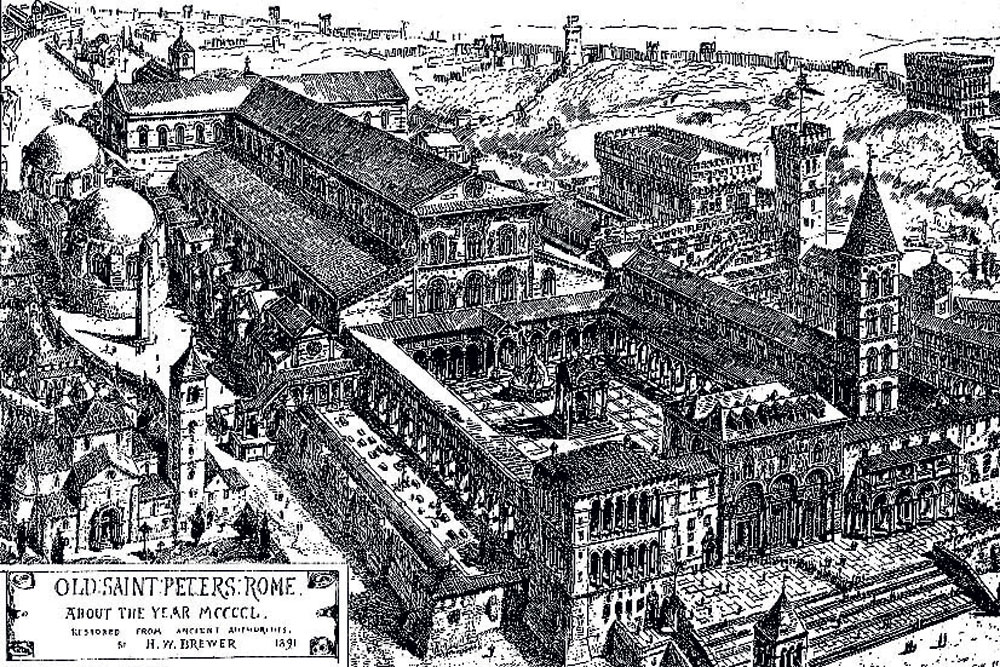
A single community had its house of worship, theatre, university, bank, supermarket, sculpture garden or park, employment office, charitable kitchen serving the poor, land registry, and hospital all in one place. No wonder, these structures seeded urbanisation itself in several parts of India, accounting for the so-called ‘temple town’. Far from being wasteful monuments to unhelpful Gods or vain rajahs, these temples served the public and helped it cohere as a community: lokasamgraha, “holding people together”, as Krishna’s word in the Gita would have it. Buddhism had built large structures centuries before the great extant Hindu temples, but they never managed to incorporate local deities and anchor the economy around them in quite this way. The eclipse of Buddhism by Hinduism makes perfect sense once we understand the social technology that the ancient Hindu temple represented; the monkish, otherworldly religion could not compete, and the fire and sword of Central Asian incursions finished it off. No wonder, too, Central Asian warlords targeted these sites for destruction: desecration and humiliation were certainly goals, but the ultimate purpose in destroying Hindu temples was destroying Hindu society itself, extinguishing a civilisation.
Although building a new Sun temple may seem drastic, it is not without precedent. Pope Julius II decided to replace the St Peter’s Basilica, which had stood on Vatican hill since the days of Constantine, as he felt his tomb deserved a finer setting
Some temple roles have persisted into the modern era, while others have not. Temples do not double as banks, hospitals, or advanced universities anymore. Yet their role in attracting tourism ensures their centrality in local business and employment. The city of Tirupati relies on the temple of Tirupati.
Yet one function, crucially, is missing from ancient temples and modern ones alike. The key is an architectural feature rarely remarked upon because it is taken for granted: the absence of a pulpit.
LIKE THE PRIEST of classical Mediterranean paganism, the Brahmin serves as the performer of a ritual, not as someone who delivers speeches to fire up a congregation. The Brahmin faces the murti, not the worshippers. A pastor’s sermon, fiery or soporific, is never absent from church on Sunday. Friday prayers in a mosque are preceded by the Khutbah Jumah, the two-part sermon whose second half concerns political matters related to the Muslim community. For centuries, the papacy has disseminated ‘correct’ political and theological positions to the faithful, in the manner of ancient Roman imperial decrees sent out to provincial governors. The Vatican doctrine office’s most recent decree, ‘Dignitas Infinita’, declared gender-altering surgeries to be grave violations of human dignity. Today, they are published electronically, but in the past these instructions on what to believe were read out to congregations from thousands of individual pulpits.
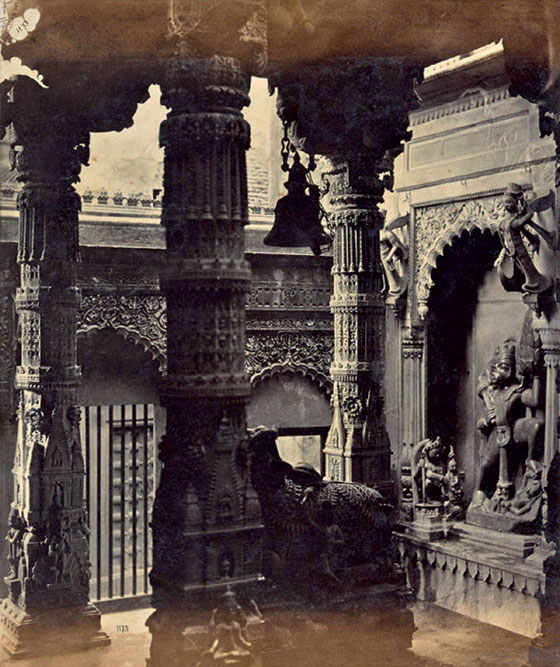
The culture of the traditional Hindu temple has lacked this aspect of ongoing, collective, mass indoctrination. Increasingly, however, temples are transforming in their social and political role. The Martand Sun Temple’s projected restoration is a minor example of that: the establishment of a graven image of a pre-Islamic, temple-building Hindu king is a public reminder of Kashmir’s Hindu past. A more thorough restoration, on whatever scale or nature, will be a more aggressive attempt to turn back the historical clock. The celebration of Rama’s new temple in Ayodhya was followed up, almost immediately, by a renewed focus on ‘investigating’ a different occupied site in Benares.
From Kashmir to Kashi, the pulpitless Hindu temple is taking on the role that mosques and churches have played for centuries, both in India and elsewhere: as centres of political agitation and organisation, and nodes for the projection of communitarian force. This is further evidence of the Hindu tradition mirroring its rivals in the arena of South Asian history. The Ram Mandir in Ayodhya, the intermittent agitation over the return of the Gyanvapi site in Kashi, the perhaps inevitable future struggle over Krishna’s birthplace, and this latest decision to renew a centuries-abandoned temple in Kashmir—temple-focused agitations have this throughline. If successful, they serve as displays of dominance, but even if unsuccessful or indefinitely stalled, they reawaken a collective sense of history, victimhood, and persecution—and, through these, a collective identity.
Ram Mandir in Ayodhya, the agitation over the return of the Gyanvapi site in Kashi, and the decision to renew a centuries-abandoned temple in Kashmir— temple-focused agitations have this throughline. If successful, they serve as displays of dominance
Paradoxically, the temple is reverting to one of its other historical functions, though in modern, democratic form. Political power has always expressed and reinforced itself through impressive architecture. To lay a temple’s foundation, in emulation of the cosmic order, is also to lay the foundation of a worldly order. Royal lines from the Guptas to the Khmers, from Varanasi to Vijayanagar, all gained legitimacy through temple-building. India’s currently dominant political party seeks a similar full-spectrum legitimisation through the restoration of India’s usurped and desecrated temples. Its opposition, forced to comment and react, gets baited into lies, sophistry, and denials. This is the widely understood rationale behind making sure celebrations in Ayodhya kicked off the election year—to make sure the election might become, in some measure, for some proportion of the electorate, a referendum on the country’s majority religion. Martand may not be the next temple to fit into this strategy—but only because there are much better candidates.
“All things fall and are built again,” wrote William Butler Yeats, “And those that build them again are gay.” During antiquity’s Hindu monarchies, the throne established the temple, and the temple consecrated the throne. Sacred mystery may elude the restorer’s chisel, and government fiat may fail to conjure a vanished sikhara on a plain in Kashmir. But in modern India’s mass democracy, the temple has been restored to an ancient political role.

/wp-content/uploads/2025/06/Cover-OpenMinds2025.jpg)












More Columns
Indian Companies Have a Ransomware Vulnerability Open
Liverpool star Diogo Jota dies in car crash days after wedding Open
'Gaza: Doctors Under Attack' lifts the veil on crimes against humanity Ullekh NP